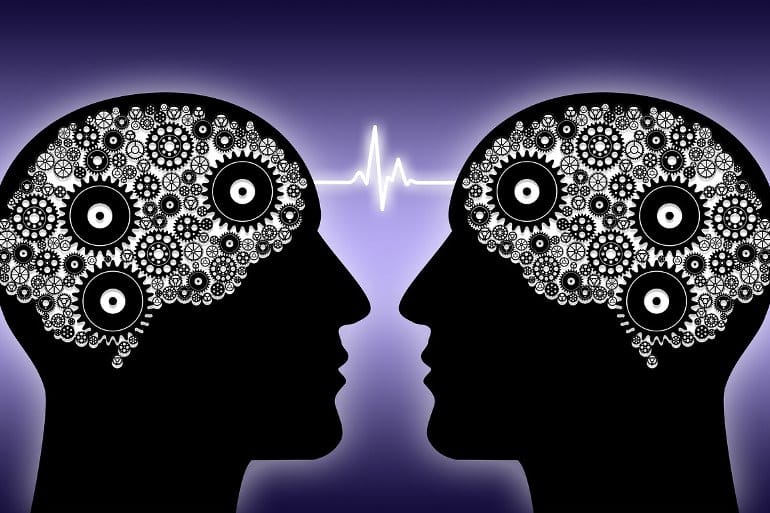Summary: Dopamine in the cerebellum helps regulate social behaviors via its action on D2 receptors. Changes in D2 levels in Purkinje cells alter sociability and preference for social novelty without affecting motor function.
Source: INSERM
The cerebellum is essential for sensorimotor control but also contributes to higher cognitive functions including social behaviors.
In a recent study, an international research consortium including scientists from Inserm – University of Montpellier (France), the Institut de Neurociències Universitat Autònoma de Barcelona (INc-UAB) (Spain), and the University of Lausanne (Switzerland) uncovered how dopamine in the cerebellum modulates social behaviors via its action on D2 receptors (D2R).
By using different mouse models and genetic tools, the researchers’ work shows that changes in D2R levels in a specific cerebellar cell type, the Purkinje cells, alter sociability and preference for social novelty without affecting motor functions.
These new findings pave the way to determine whether socially related psychiatric disorders, such as autism spectrum disorders (ASD), bipolar mood disorder, or schizophrenia, are also associated with altered dopamine receptors expression in specific cerebellar cell types.
Dopamine (DA) neurons are a major component of the brain reward system. By encoding motivational value and salience, they tighly regulate motivation, emotional states and social interactions.
Although the regulation of these processes has been largely ascribed to neural circuits embedded in limbic regions, recent evidence indicate that the cerebellum, a region primarily involved in motor control, may also contribute to higher cognitive functions including social behaviors.
However, whether cerebellar dopamine signaling could participate to the modulation of these functions remained unexplored. Researchers from Inserm – Montpellier University (France), the Institut de Neurociències UAB (Spain), and the University of Lausanne (Switzerland) uncovered a new role for dopamine as modulator of social behaviors in the mouse cerebellum.
By combining cell type-specific transcriptomics, immunofluorescence analyses and 3D imaging, researchers first demonstrated the presence of dopamine D2 receptors (D2R) in Purkinje cells (PCs), the output neurons of the cerebellar cortex. Using patch-clamp recordings, they were able show D2R modulated synaptic excitation onto PCs.
“This first set of results was already determinant for us, as they unveiled that D2R were present in the cerebellum and that, despite their low expression level, they were functional”, highlights Dr Emmanuel Valjent, research director at Inserm (France), and coordinator of the study.

The researchers then went on to study their functions. By using genetic approaches to invalidate or overexpress D2R selectively in PCs, they analyzed the impact of these alterations on motor and non-motor cerebellar functions.
“We have uncovered an unexpected causal link between PCs D2R expression levels right in the center of the cerebellum, the Crus I/II lobules, and the modulation of social behaviors.
“Reducing the expression of this specific dopamine receptor impaired the sociability of mice as well as their preference for social novelty, while their coordination and motor functions remained unaffected” explains Dr. Laura Cutando, Marie-Curie researcher at the Mitochondrial Neuropathology research group at INc-UAB, and first author of the article.
This study constitutes a first step towards a better understanding of the role of dopamine in the cerebellum and the mechanisms underlying psychiatric disorders such as schizophrenia, ADHD and anxiety disorders, which have all in common aberrant DA signaling and altered social behaviors.
About this social neuroscience research news
Author: Priscille Riviere
Source: INSERM
Contact: Priscille Riviere – INSERM
Image: The image is in the public domain
Original Research: Closed access.
“Cerebellar dopamine D2 receptors regulate social behaviors” by Laura Cutando et al. Nature
Abstract
Cerebellar dopamine D2 receptors regulate social behaviors
The cerebellum, a primary brain structure involved in the control of sensorimotor tasks, also contributes to higher cognitive functions including reward, emotion and social interaction.
Although the regulation of these behaviors has been largely ascribed to the monoaminergic system in limbic regions, the contribution of cerebellar dopamine signaling in the modulation of these functions remains largely unknown.
By combining cell-type-specific transcriptomics, histological analyses, three-dimensional imaging and patch-clamp recordings, we demonstrate that cerebellar dopamine D2 receptors (D2Rs) in mice are preferentially expressed in Purkinje cells (PCs) and regulate synaptic efficacy onto PCs.
Moreover, we found that changes in D2R levels in PCs of male mice during adulthood alter sociability and preference for social novelty without affecting motor functions.
Altogether, these findings demonstrate novel roles for D2R in PC function and causally link cerebellar D2R levels of expression to social behaviors.






